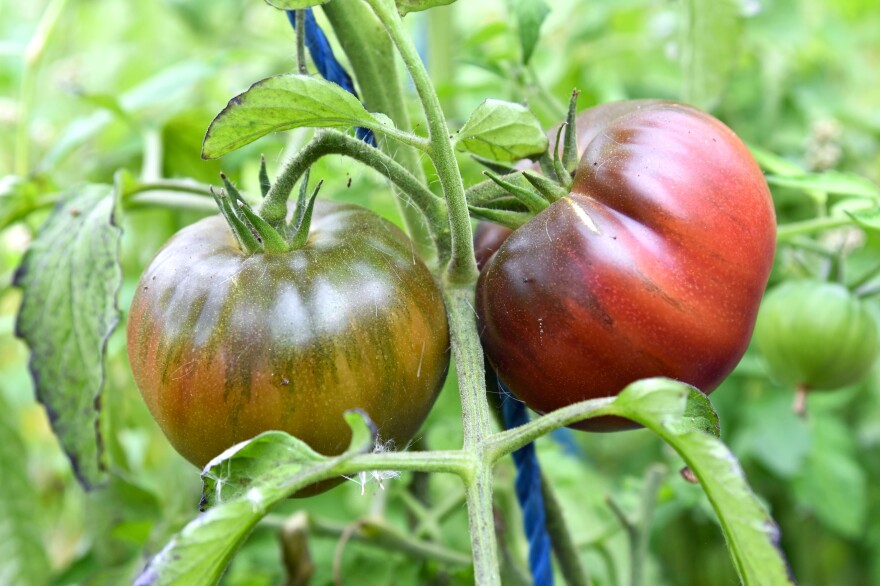A homegrown tomato, freshly-picked and warm from the sun, is a thing of beauty — and the goal of many a backyard gardener.
Here are some tips from Emma Erler to give your tomatoes the best chance of reaching their full beefsteak potential:
- Tomatoes love heat and sun. Plant in full sun, ideally a location which receives six or more hours of sun every day. Use rich, well-drained soil and space your plants far enough apart to allow good airflow. This helps to prevent fungus and disease.
- Stake or cage plants at the time of planting. Remove suckers, the small shoots that grow in the "V" formed where a tomato plant's branches meet the main stem. They can develop into new stems, but they may also draw energy away from the main plant's fruit production. Removing the suckers helps with airflow, too.
- Tomatoes are relatively heavy “feeders” and will likely benefit from the addition of composted manure or other clean compost to improve the soil. Fertilizer is essential as well. If you haven't tested your soil, use an organic general purpose fertilizer or tomato-specific fertilizer.
- Apply a mulch to warm the soil and retain moisture. Some gardeners like to boost the warmth in the soil by using black plastic as mulch to absorb sunlight, but if you're avoiding plastic in the garden, you can use straw, chipped leaves, grass clippings, or clean compost.
- Consistent soil moisture will produce the best quality fruit; drip irrigation is the best. Avoid overhead sprinkling. It will get the leaves wet and lead to disease. An inch of rainfall or irrigation a week is ideal.
The payoff of all your effort is the ultimate summer sandwich!

Jessica Hunt
/
NHPR
See you in the garden!
Homegrown NH is a collaboration between Squam Lakes Natural Science Center and NHPR.










